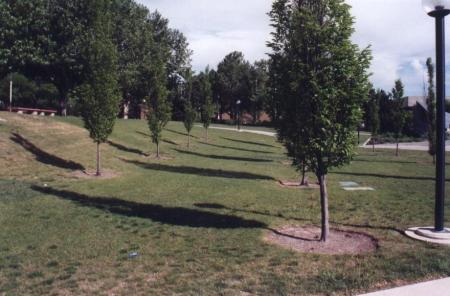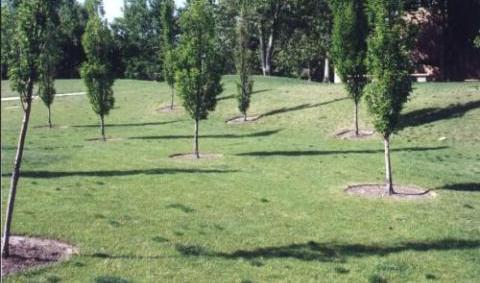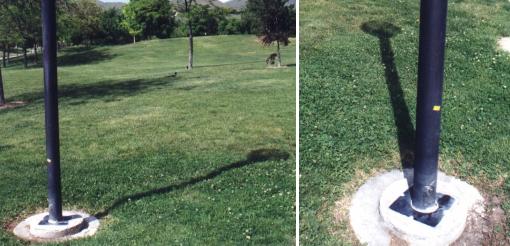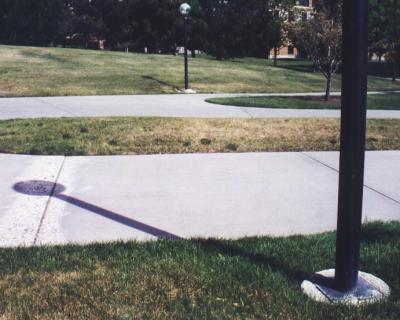terrain and shadow







|
Central to the claims of many conspiracists is the notion that shadows must always appear parallel in sunlit photos, or at best exhibit only a very small amount of foreshortening. This claim thoroughly ignores the effects of terrain on the appearance of shadows. Foreshortening (perspective) is covered elsewhere. This page gives examples of the effects of terrain variation (often not especially visible to the camera) on the apparent direction of shadows.
Fig. 1 shows two rows of trees receding from the viewer. One row of trees casts shadows on relatively level ground while the row to the left of the viewer casts shadows on a hill. Fig. 2 below shows a similar stand of trees from the opposite direction. If the lighting angle, the slope, and the view angle are chosen at random, similar shadow effects will be seen. Conspiracists often provide carefully arranged photographs (e.g., Dark Moon, p. 22 photo #19) that represent the special cases where terrain effects are mitigated by view angles. These photos are offered as proof of what should always occur in sunlight, and therefore the Apollo photographs "must" be wrong. However, the ease with which conditions such as in Fig. 1 and Fig. 2 occur illustrates that the conspiracist photos are, in fact, the odd men out.
"MACRO" TERRAIN AND "MICRO" TEXTURE Figs. 1 and 2 above are examples of what we may call "macro" effects on shadows. The shadows of straight, slender objects like trees are affected wholesale by large variations in the terrain.
In Fig. 3 a lamppost has been photographed looking cross-sun (left) and again looking down-sun (right). In the down-sun photo the shadow appears linear and precise, whereas in the cross-sun photo the edges are affected by the texture and the shadow appears crooked. This "micro" effect causes different effects at different places along the shadow. If a shadow is cast on a textured surface, different elements of the texture receive different parts of the shadow as it is distributed over the surface. When you view these from a side angle (Fig. 3, left) you can see the shadow distribution. When you view it in a down-sun direction (Fig. 3, right) the elements of the texture "line up" along your line of sight, which also happens to be very close to the lighting angle. This brings into alignment the texture elements which contain the pieces of the shadow scattered over the texture.
This is why photo analysts don't use this method, or anything like it. The notion of drawing lines alongside shadows in photographs and asserting that those represent some sort of meaningful "shadow direction" against which authenticity can be judged, is strictly an invention of the conspiracists. Photo analysts use techniques such as vanishing point analysis in order to determine if the same light source cast a set of shadows. |





